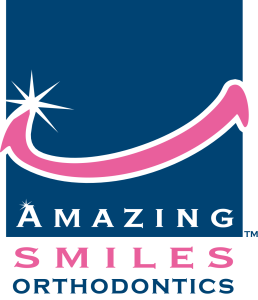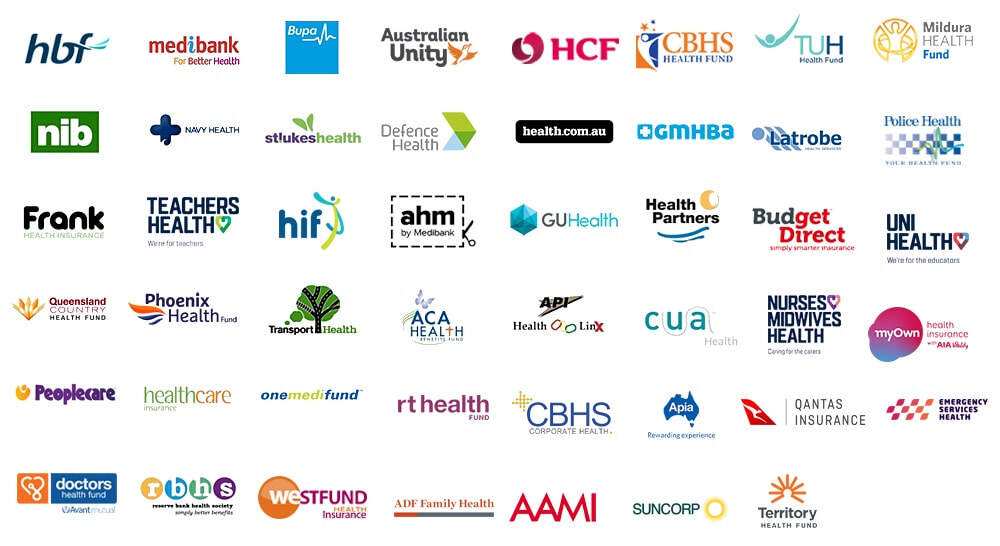
Save up to 75% Less* for Traditional Braces
Traditional braces are an orthodontic treatment used to straighten and align teeth, improve the bite, and enhance the smile’s overall appearance. They consist of small brackets bonded to the teeth and connected by wires and tiny elastic bands. The wires and bands apply gentle pressure to the teeth, gradually moving them into their desired position over time.
Traditional braces can be made from different materials, such as metal, ceramic, or plastic, and are typically worn for 12-36 months, depending on the individual needs of the patient. During this time, the patient must see our local orthodontic dentist periodically to adjust the wires and brackets to maintain the proper pressure level on the teeth.
While traditional braces can be uncomfortable at first and may require some adjustment to speaking and eating, they are a highly effective treatment for correcting a wide range of dental problems, such as crowded or crooked teeth, gaps between teeth, overbite, underbite, and crossbite.
Our experienced cosmetic dentist typically provides orthodontic treatment with traditional braces. Amazing Smiles professional dentists will work with the patient to develop a treatment plan that addresses their individual needs and goals for the appearance and function of their teeth.

The average duration for dental braces 16-24 months
Procedure for getting traditional braces
If you are considering getting traditional braces, here is a general overview of what you can expect during the process:
Initial Orthodontic Consultation
Pre-treatment
Getting braces
Adjustment appointments
After-treatment
Overall, the process of getting traditional braces can take several months to a few years, depending on the complexity of your case. Following your dentist’s instructions and attending all scheduled appointments is important to ensure the best possible outcome.
Braces from $3,750*
Traditional orthodontic dentistry is an essential investment for your future. Teeth alignment can bring your teeth and bite to an ideal position. Alignment is critical in younger children and teens for their long-term smiles. Book a complimentary consultation* with one of our orthodontic dentists for a personalised quote. Prices are determined by the specific requirements of each patient, including factors such as the duration of treatment and the complexity of the case.
*Single Arch Estimate (Not total upper and lower braces). Prices are based on the specific needs and timeframes per individual case.
Benefits of traditional braces
Traditional metal braces are an orthodontic treatment to correct misaligned teeth and bite issues. Some benefits of traditional braces include:
- Effective: Traditional braces are highly effective at correcting many dental issues, including crowding, spacing, and misaligned teeth. They can also fix bite problems like overbite, underbite, and crossbite.
- Cost-effective: Traditional metal braces are often the most cost-effective option for orthodontic treatment.
- Durability: Metal braces are made of durable, durable materials that can withstand the pressure and force required to move teeth into their proper position.
- Predictable: Orthodontists have used traditional braces for years, so the treatment process is predictable and well-established. Patients and orthodontists can expect consistent results.
- Customizable: Traditional braces can be customized with different coloured bands, which can be a fun way for patients to express their personalities and style.
- Can treat complex cases: Traditional braces are often the best option for treating difficult cases, such as severe crowding or bite issues that may require headgear or other appliances.
- Shorter treatment times: Advances in technology and techniques have made treatment times with traditional braces faster than ever before, which can reduce the overall length of treatment and discomfort.
Why Choose us for dental braces?
- Braces from only $3,750* compared to Australian national average costs of $8,000-$9,000.
- Pay from as little as $35 per week after initial deposit requirements. Payments plans are flexible and provided by with Zip, Afterpay, or Humm after eligibility.
- We treat most mild, moderate to complex cases. Costs vary based on duration and complication of treatments.
- We treat mild, moderate, to complex orthodontic cases. Prices vary upon alignment complexity and duration of treatment.
- Our experiences dentists are with you the entire way. No treatment or adjustments are performed by inexperienced dental assistants.
- All orthodontics and additional dental treatments* can be performed within our clinic rather than referred to other clinics. Our cosmetic dentists can perform all pre and post dental treatments to achieve your desired outcomes. *Patients that require oral maxillofacial surgeon are referred to a specialist.
*Single Arch Estimate (Not total upper and lower braces). Prices are based on the specific needs and time frame required for per patient’s case.
How long is the treatment for traditional braces?
The treatment length for traditional braces varies by individual case, typically ranging from a few months to a couple of years. On average, braces take about 16 to 24 months to complete. Some instances may finish in as little as six months, while more complex situations can extend to three years.
Factors affecting treatment time include the severity of the malocclusion, the patient’s age, and the type of braces. Your orthodontist will create a tailored treatment plan, providing an estimated timeline and discussing what to expect. They may suggest additional appliances like headgear or rubber bands to help achieve the desired results.
Proper care, including regular adjustments and dental visits, is essential for the best outcome and to minimise treatment length.
Are traditional metal braces better?
Metal braces effectively treat various dental issues, including alignment, crowding, gaps, and bite problems. Made of steel, they use brackets and wires to shift teeth into the correct position.
While metal braces work well, clear aligners are also an option, especially for less complex cases. The best choice depends on factors like the severity of the dental issue, age, lifestyle, budget, and personal preference.
Metal braces are durable and suitable for severe cases, while clear aligners are less noticeable and better for minor misalignment. It’s essential to consult an experienced orthodontist to determine the best treatment plan for your needs.
Are metal braces painful?
Metal braces can cause mild discomfort or soreness, especially after application or adjustments. This usually results from pressure as teeth shift and subsides in a few days.
The lips or cheeks may irritate, which can be eased with orthodontic wax. Over-the-counter pain relievers like acetaminophen or ibuprofen can also help. Consult your orthodontist for more tips on managing discomfort.
Do I need to change my diet with metal braces?
When you have metal braces, adjust your diet with these guidelines:
- Avoid hard and sticky foods: Avoid hard candy, popcorn, nuts, and gum to prevent damage to your braces. If necessary, cut these foods into small pieces.
- Cut crunchy foods: Slice apples, carrots, and celery into small, bite-sized pieces to make them easier to eat.
- Choose soft foods: Opt for soft foods like mashed potatoes, cooked vegetables, and soup, which are easier on your braces.
- Limit sugary and acidic foods: To prevent tooth decay, reduce your intake of soda, juice, and candy. Always brush your teeth after consuming them.
- Be cautious with tough meats: To make meats like steak or beef jerky easier to chew, cut them into small pieces or cook them until tender.
Finally, brush your teeth and braces thoroughly after every meal and snack to maintain good oral hygiene. Consult your dentist for any specific dietary recommendations based on your treatment plan.
What do I do if my brackets or wires brake with metal braces?
If your braces or wires break, contact your orthodontist immediately. In the meantime, follow these steps:
- Check for Damage: Use a mirror to inspect your braces and wires. If anything is loose or broken, gently reposition it with a clean finger or the eraser end of a pencil.
- Use Orthodontic Wax: Apply wax to any areas causing discomfort to cushion the braces.
- Avoid Hard or Sticky Foods: Stick to soft foods to prevent further damage to your braces.
- Take Pain Relievers: Use over-the-counter pain medication like acetaminophen or ibuprofen if needed.
- Contact Your Orthodontist: Reach out for an emergency appointment to fix the issue.
Prompt action is crucial; neglecting broken braces can worsen damage or delay your treatment.
Does my private health insurace cover traditional braces?
Coverage for orthodontic treatment, such as traditional braces or clear aligners, varies by private health insurance providers and policies. Some plans may cover orthodontics, while others may not.
Orthodontic treatment is typically classified as “major dental.” Most plans have waiting periods, coverage limits, and specific eligibility criteria. It’s important to check your policy or contact your insurance provider for details on coverage, waiting periods, and annual limits.
Additionally, some insurers may have agreements with specific orthodontic clinics or their own dental networks, which can affect your benefits. Be sure to ask about any preferred providers or network restrictions.
Even if treatment is covered, there may still be out-of-pocket costs, depending on the type of braces or aligners, treatment duration, and any additional services needed.
To make an informed decision, consult with your orthodontist at Amazing Smiles and your insurance provider for specific information on coverage, costs, and payment options.
Orthodontic Item Numbers (treatments may differ based on patients’ needs):
- 831 Full arch banding – per arch
- 881 Complete course of orthodontic treatment
Why do teeth shift after traditional braces?
Teeth can shift after traditional braces for several reasons. Understanding these reasons can help maintain the results of orthodontic treatment. Here’s a concise overview:
- Elastic Memory of Tissues: Periodontal ligaments hold teeth in place but have a natural “memory.” After braces are removed, these tissues may pull teeth back to their original positions until they adjust to their new alignment.
- Incomplete Bone Remodelling: When teeth move, the surrounding bone needs to remodel to support their new positions. This remodelling takes longer than the teeth’s movement during braces, making the teeth vulnerable to shifting until the bone stabilises.
- Growth and Development: For children and teens, natural jaw growth can lead to teeth shifting post-treatment, especially during growth spurts in late adolescence.
- Natural Tooth Movement: Teeth naturally shift over time, known as “mesial drift.” Even well-aligned teeth can experience some movement.
- Not Wearing Retainers: Retainers are crucial after braces to maintain teeth alignment. If not worn as directed, teeth can quickly revert to their former positions.
- Changes in Soft Tissues: After braces, pressure from the tongue, cheeks, and lips can influence tooth movement. Habits like tongue thrusting can exacerbate this shift.
- Wisdom Teeth Eruption: The emergence of wisdom teeth can cause crowding and movement in other teeth, especially if the jaw has limited space.
Preventing Teeth Shifting After Braces
- Wear Retainers as Prescribed: Consistent retainer use is essential for maintaining tooth positions.
- Address Habitual Behaviours: Manage habits that apply pressure to teeth to avoid shifts.
- Maintain Regular Check-Ups: Regular visits to your orthodontist can help identify and address any movement early on.
While minor shifting is typical, following these guidelines can help retain the benefits of orthodontic treatment.
What are the elastics for with metal braces?
Elastics, or rubber bands, are used with braces to correct bite issues and align teeth. They provide additional force to help move teeth and jaws into the correct positions, addressing problems like overbites, underbites, crossbites, and open bites.
Attached to hooks on the braces, elastics create constant, gentle pressure between the upper and lower teeth. Wearing them consistently is crucial for effective bite correction and achieving the best results from orthodontic treatment.
IMPORTANT: Why do costs for braces differ?
Several factors affect the cost of dental braces:
- Type of braces: Costs vary by type, traditional metal braces are usually the cheapest, while lingual braces and clear aligners tend to be more expensive.
- Severity of the case: More complex dental issues may require longer treatment and more adjustments, increasing the overall cost.
- Length of treatment: Longer treatment durations often result in higher costs due to more frequent adjustments.
- Additional procedures: Sometimes, extra procedures, such as treatments for decay, gum issues, tooth extractions, composite bonding, or jaw surgery, may be necessary, adding to the total cost.
Brace costs are quoted on a case-by-case basis. We offer a FREE analysis for a personalised quote. Complete the form below to arrange a consult. Please note that no treatment is provided during the free consultation.
We accept all major health funds

